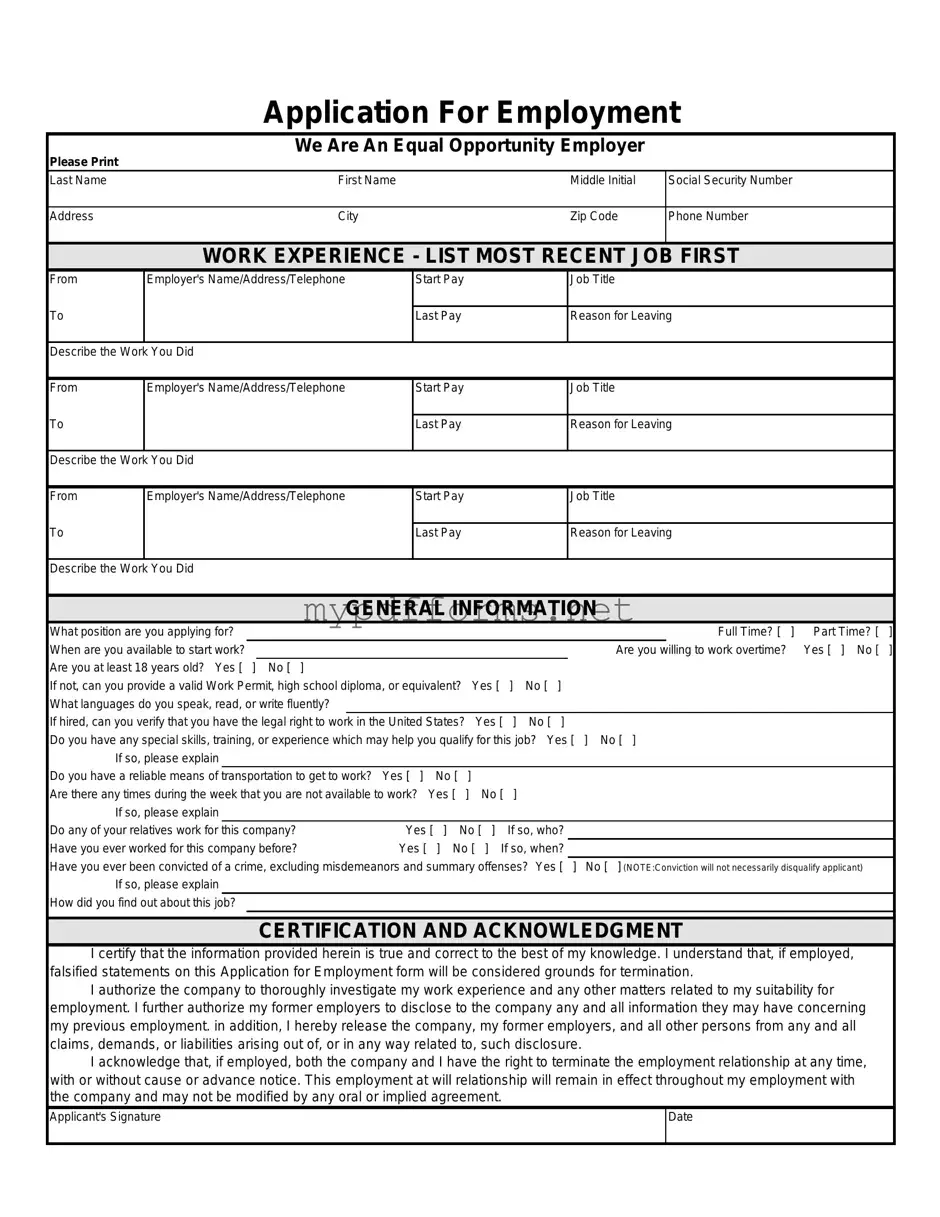The Spanish Application Employment form is a crucial document for individuals seeking job opportunities within organizations that prioritize equal employment opportunities. This form captures essential personal details, including the applicant's name, social security number, and contact information, ensuring employers have the necessary data to initiate the hiring process. The work experience section allows candidates to outline their previous employment history, detailing roles, responsibilities, and reasons for leaving, which helps employers assess qualifications. General information inquiries cover aspects such as availability, willingness to work overtime, and language proficiency, providing a comprehensive view of the applicant's capabilities. Additionally, the form includes important legal acknowledgments, ensuring that candidates understand the implications of their responses and the employment relationship. By signing the certification section, applicants affirm the accuracy of their information and grant permission for the company to verify their employment history. This form not only facilitates the hiring process but also promotes transparency and trust between potential employees and employers.
